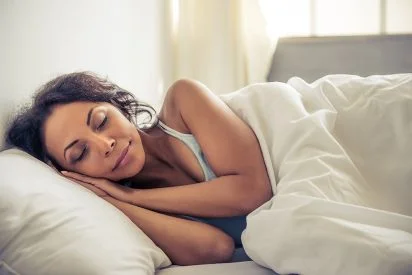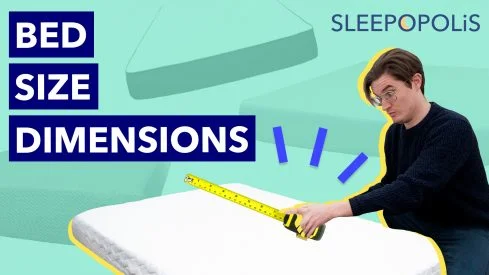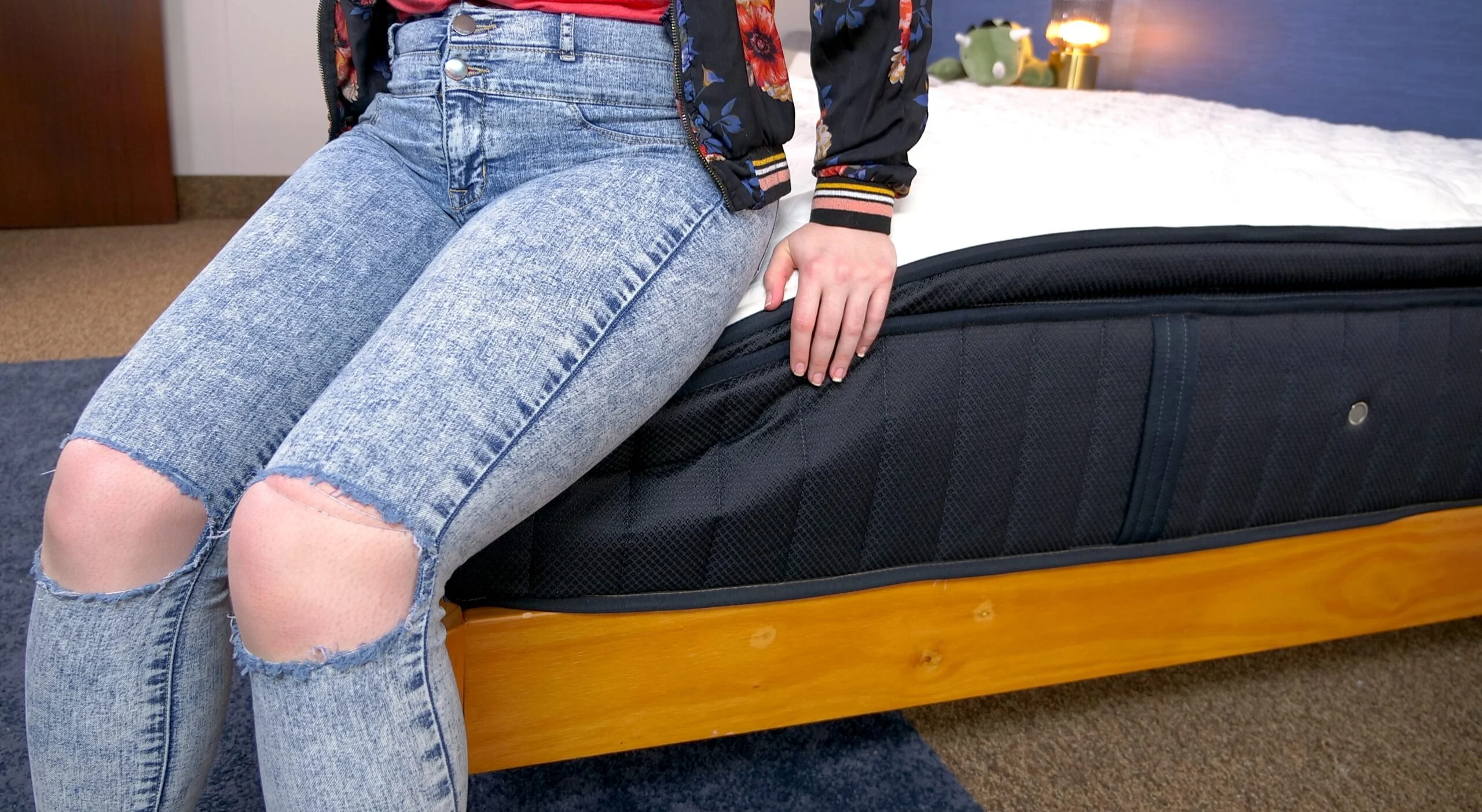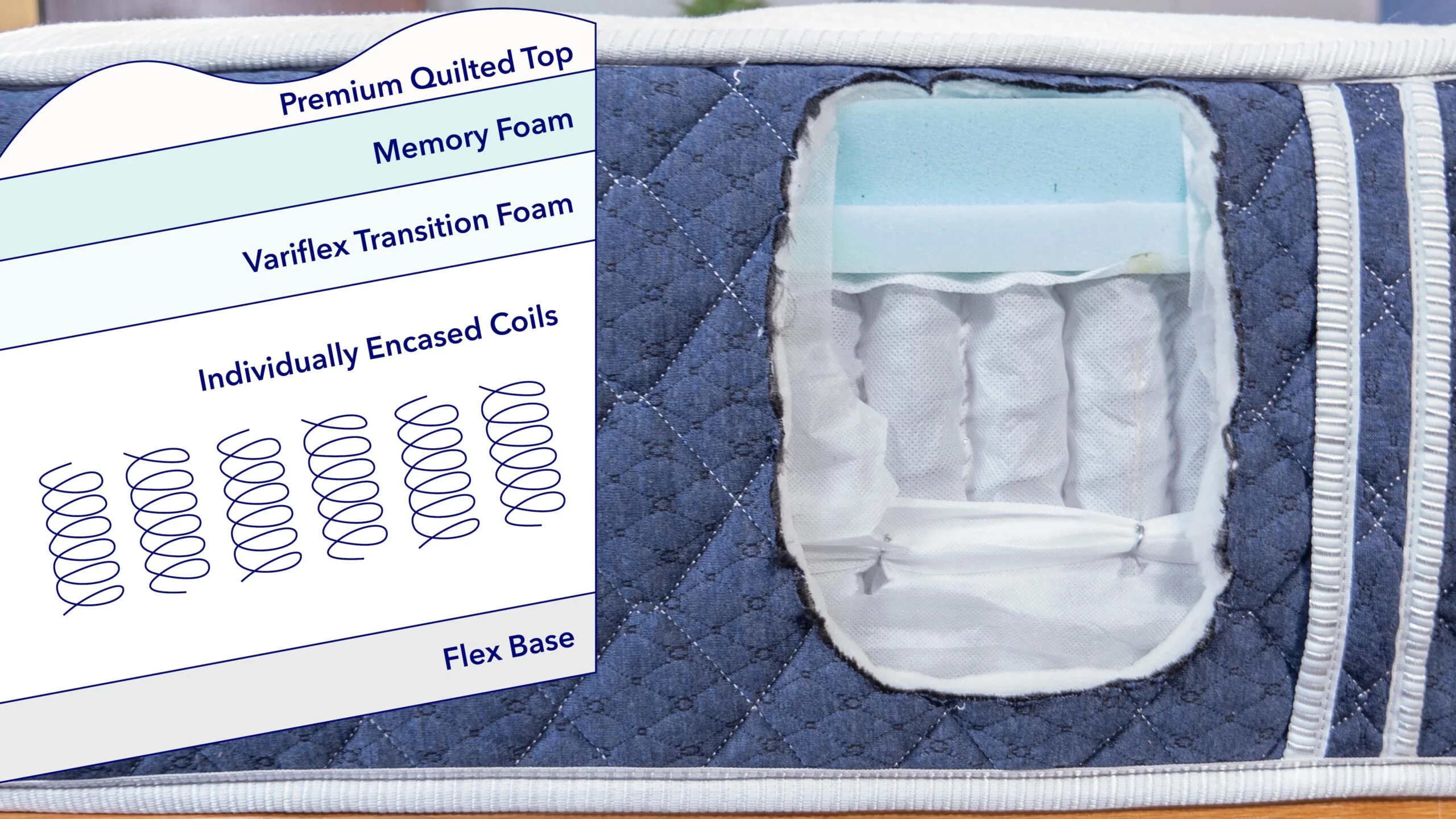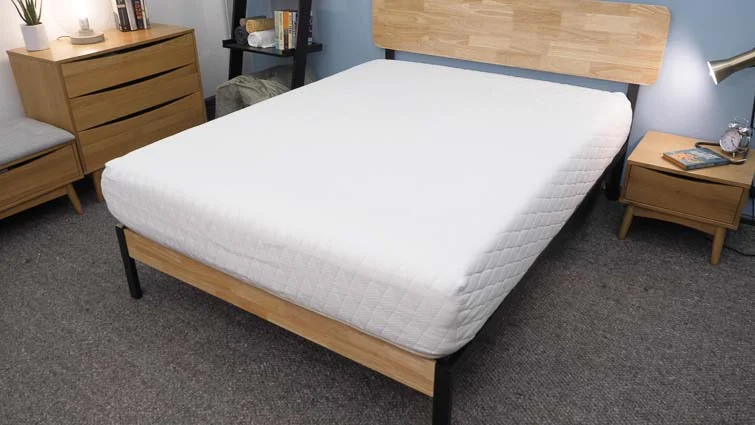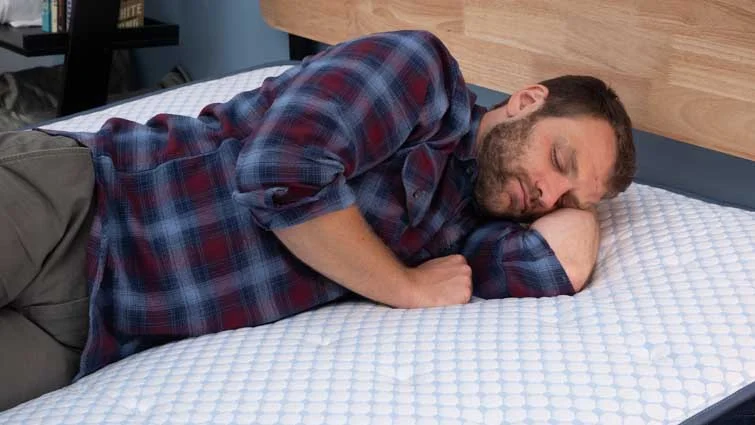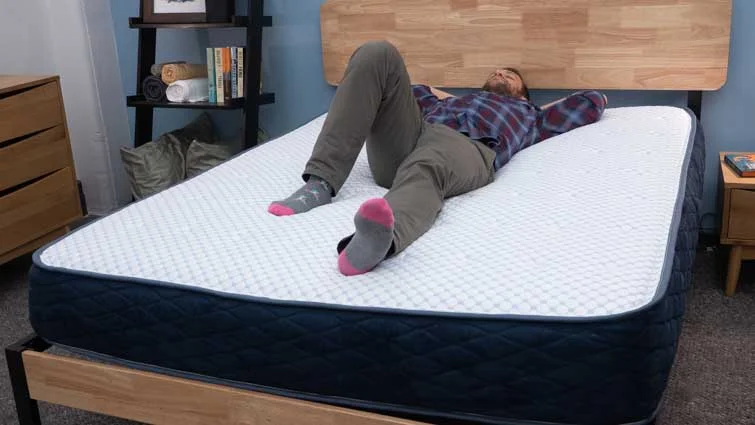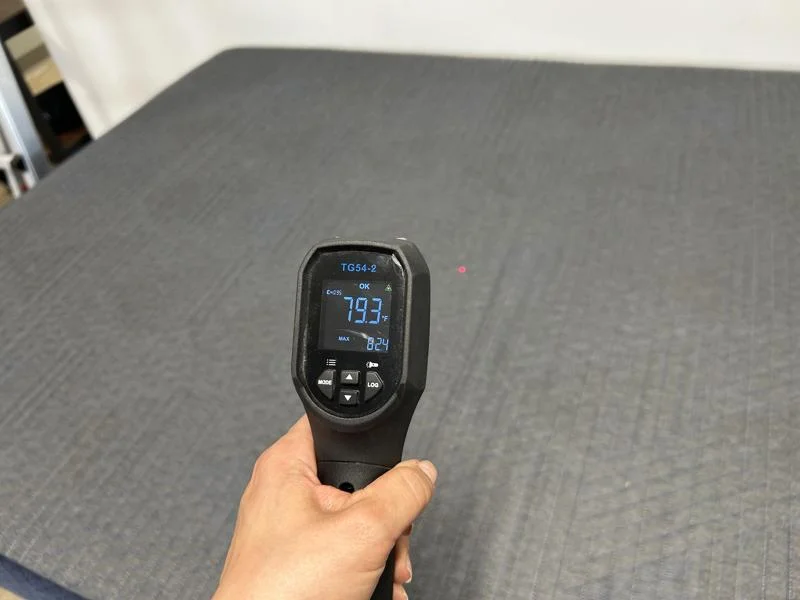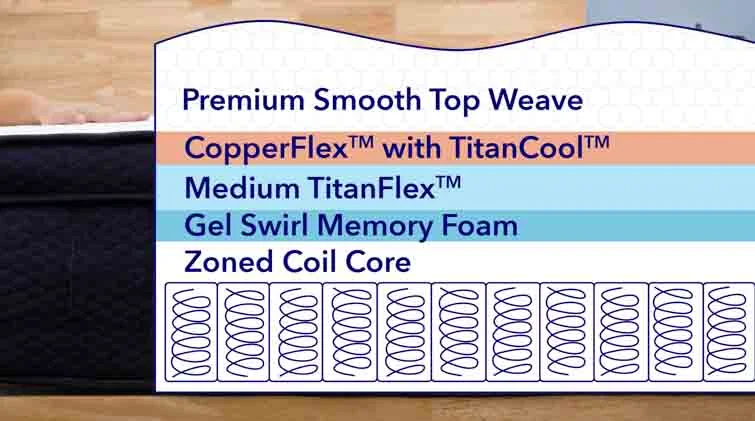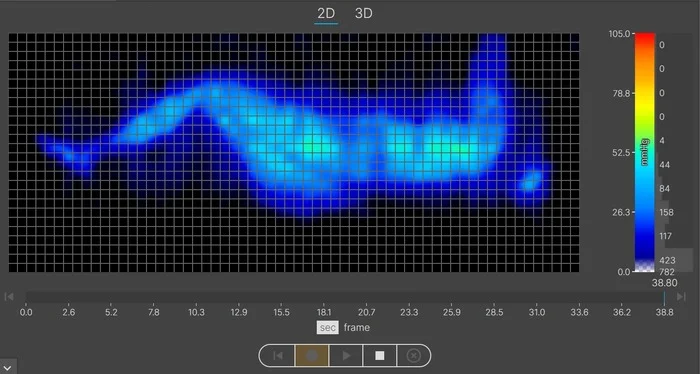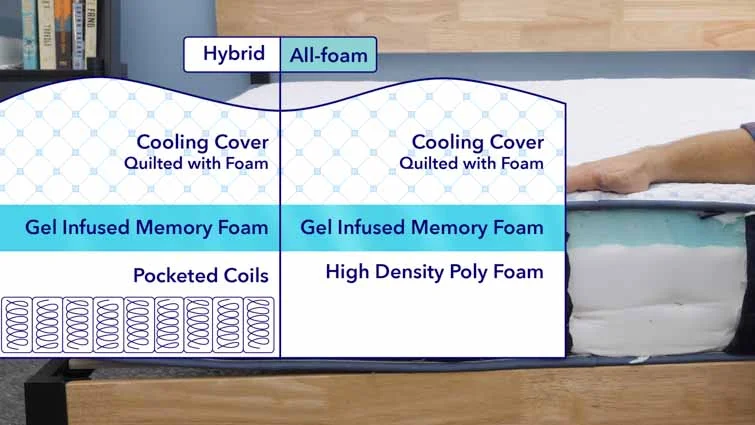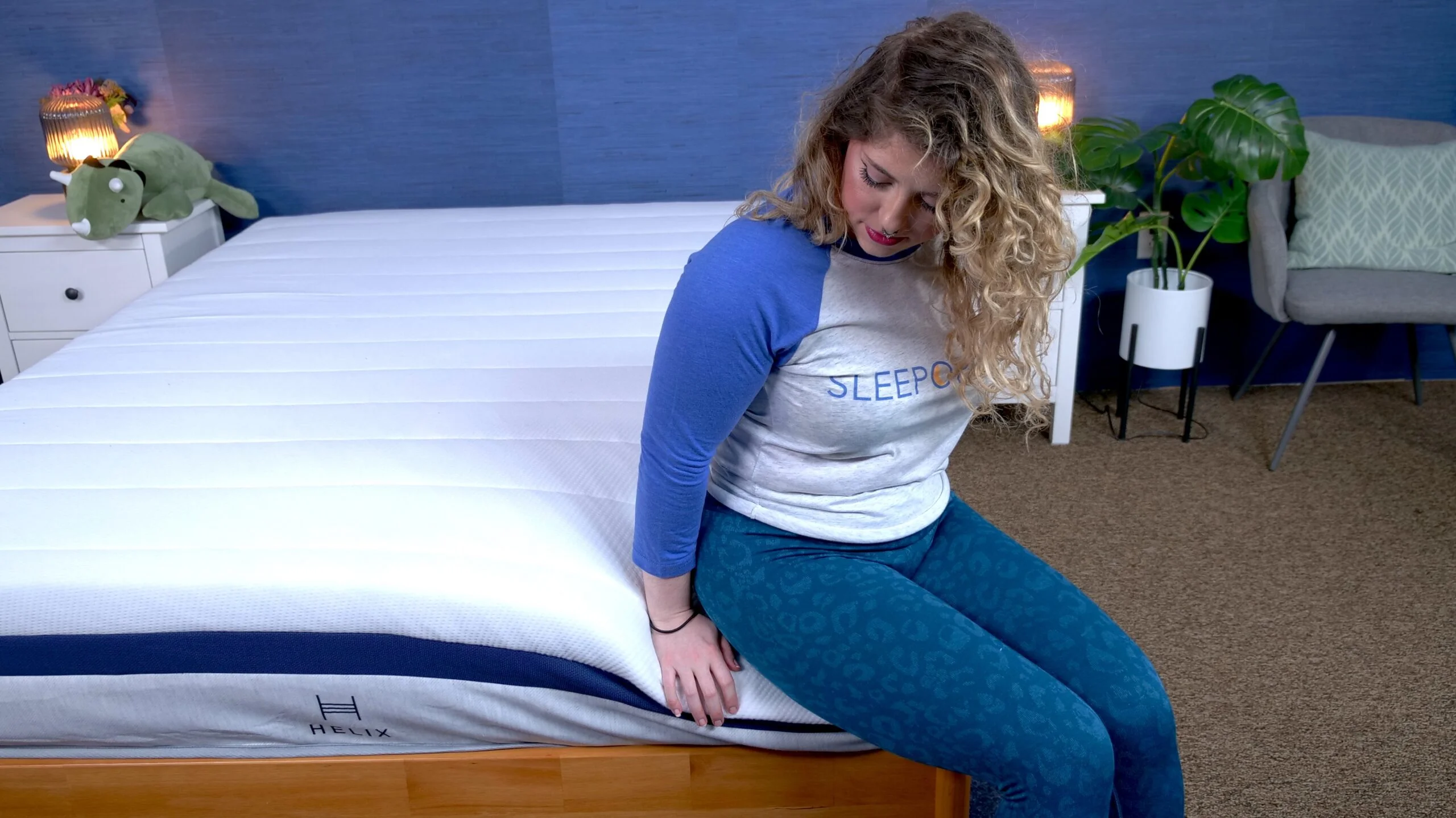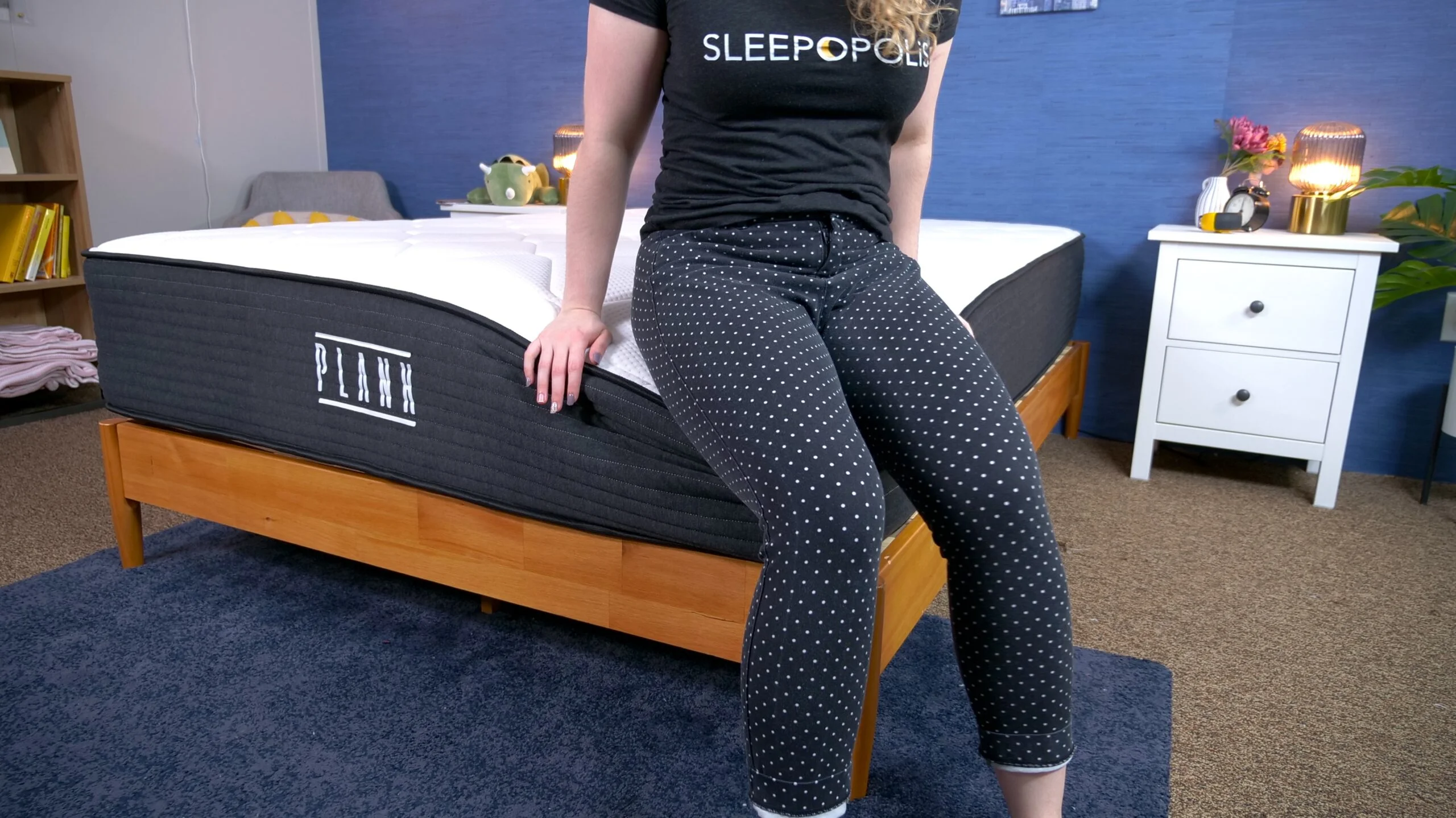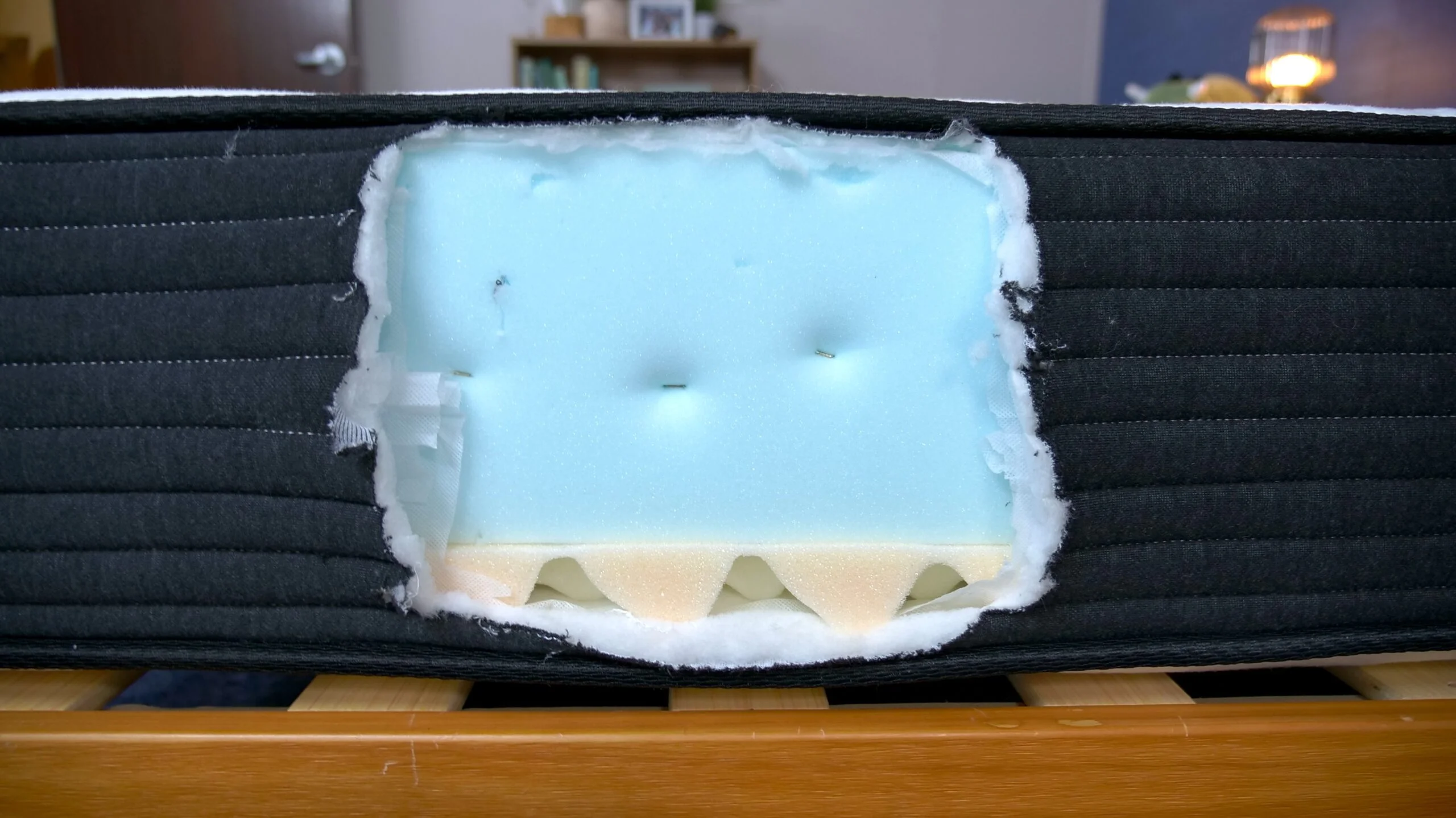Roadtrippers, wanderers, and travelers can sleep in style now as they ride across the country, thanks to the innovation of recreational vehicles or RVs. These are truly homes on the road, with some of the more modern models offering all the comforts and amenities of home, from plush couches to full-service kitchens to, of course, a place to sleep.
Sleep is as important during travel as it is when you’re at home. RVs give you the opportunity to have the comfort of a traditional mattress without having to stop and pay for a hotel room. However, these small spaces may not be able to accommodate just any mattress — so before you lug your bed down the stairs and into your vehicle, let us introduce you to some of the best RV mattresses out there.
We’ve tested hundreds of mattresses at Sleepopolis, helping over 60,000 people find their new favorite over the years we’ve been in operation. Many of these mattresses come in RV sizes for cramped campers, but do they truly offer more comfort than a cot under the stars? Our expert testers and certified sleep science coaches put these beds to the test for comfort and durability. We also gathered input from our medical experts, chief medical advisor Dr. Raj Dasgupta (MD, FACP, FCCP, FAASM) and medical product tester Dr. Joe Tedesco (DPT).
The fruits of our labor yielded this list of our favorite RV beds, all built to provide a premium sleep experience no matter how far your travels take you from home.
Sleepopolis’ Best In Rest — RV
The Brooklyn Bedding Signature Hybrid earned our top spot on the best RV mattress page because it’s not only a comfortable bed to rest on after a long day of adventuring, but it’s also incredibly supportive. It’s a well-rounded option that promotes a balanced feel, and it’s available in a number of sizes and three different firmness levels. Our testers found that this bed can work for a variety of sleepers and circumstances.
The Best RV Mattresses
- Brooklyn Bedding Signature Hybrid – Best RV Mattress Overall
- Dreamfoam Essential – Best Value RV Mattress
- Brooklyn Bedding Aurora Luxe – Best Luxury RV Mattress
- Dreamfoam Hybrid – Best Hybrid RV Mattress
- Helix Midnight – Best RV Mattress for Side Sleepers
- Plank Firm – Best Firm RV Mattress
Disclaimer: Please note that the content in this article is meant for informational purposes only and should not be construed as medical advice or serve as a substitute for seeing a medical professional regarding any sleep problems you may have. Please see your doctor regarding any urgent medical issues.
What I Looked For in the Best RV Mattresses
The best RV mattresses will be comfortable, durable, and come in at a reasonable price for all that they offer. I’ll dive deeper into how we measured each category’s worth when choosing our top picks.
- Comfort: If you are opting for an RV over traditional methods of camping, comfort is a must. We don’t want these beds to feel like you’re sleeping on the ground, so we made sure to examine how they felt in terms of support, pressure relief, and firmness.
Our testers lie down in every position on these beds, getting a feel for which sleeper types will most enjoy the mattress. We had mattress experts with different body types and sleep preferences test each bed to get a more holistic sense of how comfortable the mattress feels to the widest audience. The mattresses on this list, therefore, come in a range of firmnesses and feels to cater to multiple sleepers with all sorts of unique needs and conditions.
- Durability: You want to be sure your RV mattress can survive camping trips, road trips, and everything in between, so durability is a must. We tested each of these mattresses for their durability by examining the quality of their materials and their construction.
We also considered the length of any warranties provided, as this is a good preview of how long a product is expected to last before showing signs of deterioration. Edge support is another marker of durability as it shows how likely a bed is to hold its shape over time. We rate edge support out of 5, based on our testers’ findings when they sit and lie down at the perimeter of each mattress.
- Value: An RV, camper, or motorhome is already an investment, and if you also have a mattress at home, you’re likely not looking to spend top dollar for a bed that gets less use. That doesn’t mean you have to settle for cheap and uncomfortable options, though. This is why we prioritized mattresses with a high overall value. This means looking at more than just the price tag.
We compared the quality and performance of the product we received with the price we paid, ensuring everyone gets a good deal. On this list, we included both budget options and those who have extra money to spend, but all should offer comfort and quality in equal measure.
Need help finding the right mattress?
Comparing the Best RV Mattresses
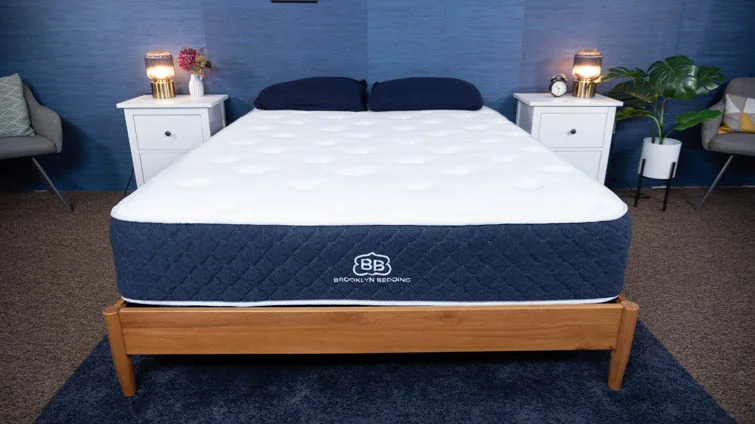 |  | 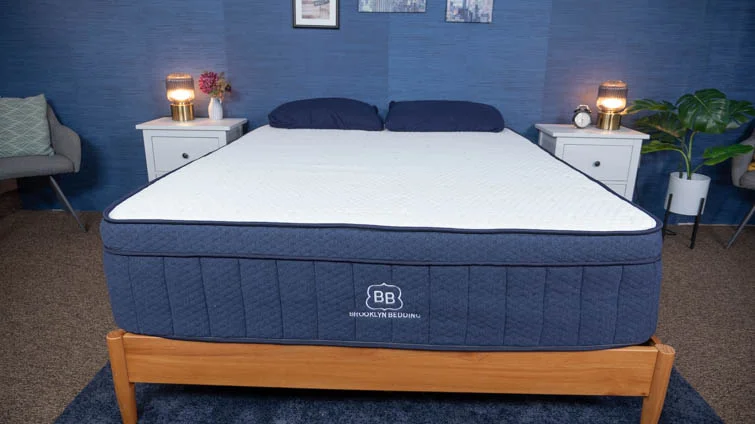 | 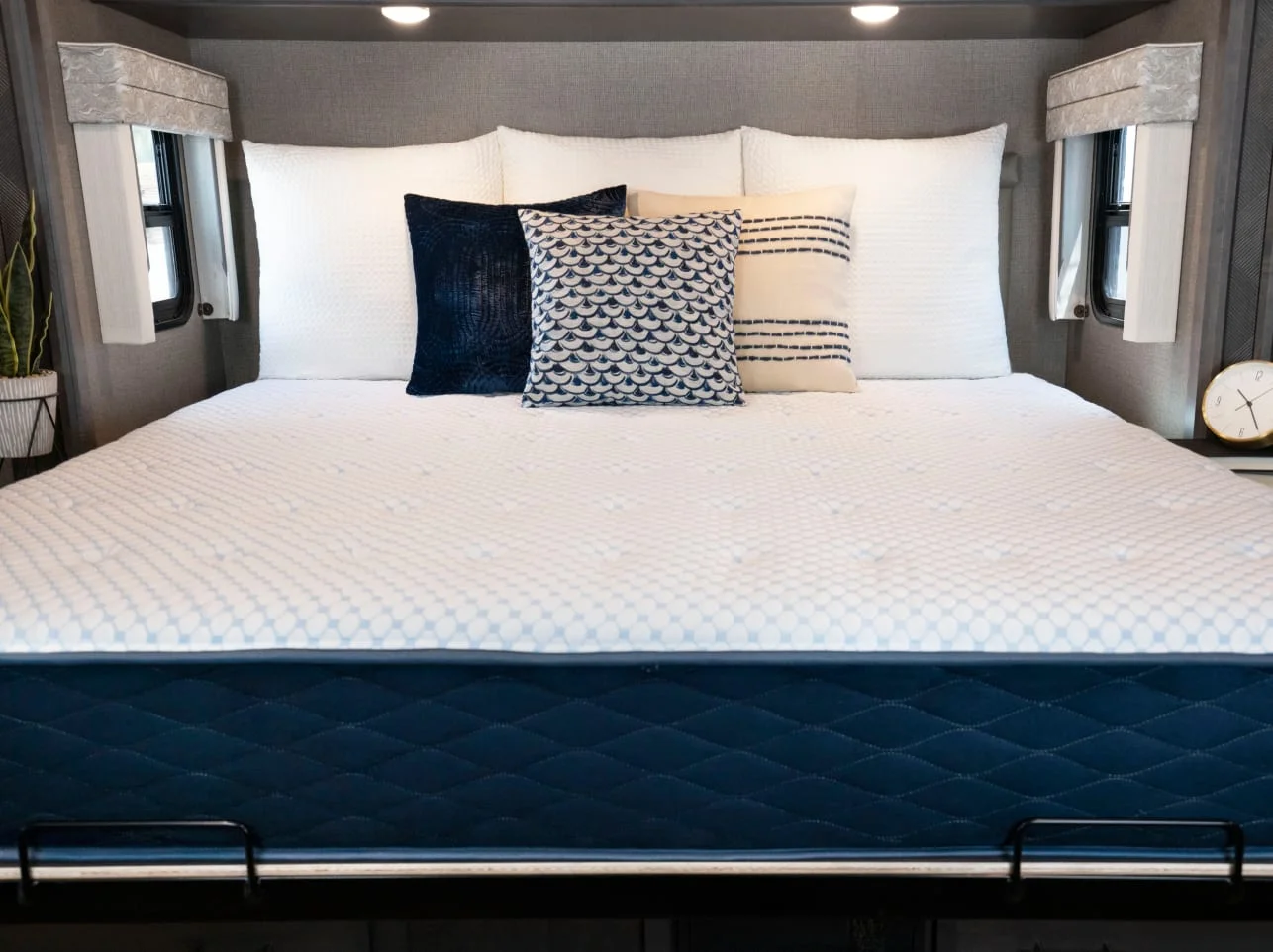 |  | 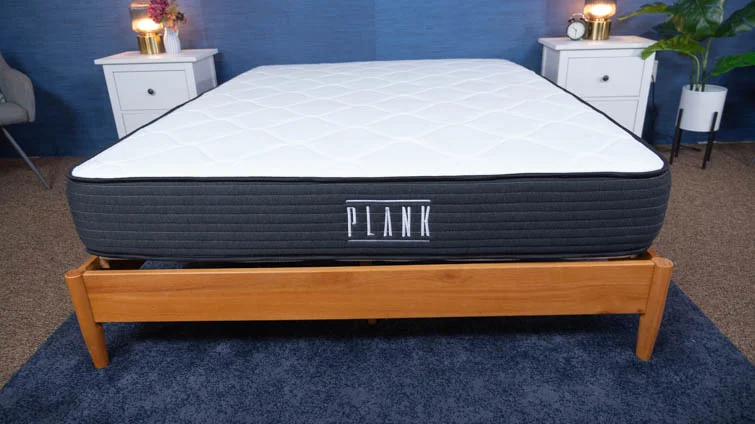 | |
| Brooklyn Bedding Signature Hybrid RV Mattress | Dreamfoam Essential RV Mattress | Brooklyn Bedding Aurora Luxe RV Mattress | Dreamfoam Hybrid RV | Helix Midnight Mattress | Brooklyn Bedding Plank Firm Mattress | |
| Rating | ||||||
| Firmness | Multiple firmness options | Firm: 7.5/10 | Multiple firmness options | Medium-firm: 6.5/10 | Medium-firm: 6.5/10 | Multiple firmness options |
| Material | Hybrid | Foam | Hybrid | Hybrid | Hybrid | Foam |
| Cooling | — | — | — | — | — | |
| Best For | Back Sleepers, Seniors, Couples | Side Sleepers, Back Sleepers | Side Sleepers, Hot Sleepers, Back Pain, Hip Pain | Back Sleepers | Side Sleepers, Back Sleepers, Couples | Back Sleepers, Stomach Sleepers, Back Pain, Seniors |
Brooklyn Bedding Signature Hybrid – Best RV Mattress Overall
The Brooklyn Bedding Signature Hybrid mattress combines a foam comfort layer and sturdy coils. This combination of materials makes it bouncy and easy to move around on. It comes in three firmness levels, and we recommend the Medium model for most back sleepers. It’s a great choice for shoppers who are looking for a new mattress on a budget. For more information, check out our video review.
What our tester says:
“Given that the Signature Hybrid has some excellent bounce, I’d highly recommend this mattress for combination sleepers who often change positions multiple times throughout the night. I also think the Signature Hybrid could be a great fit for couples. You shouldn’t be overly disturbed by a restless partner on this bed, and it has nice, firm edge support.” – Nichole Mondshein, lead reviewer and staff writer
Dreamfoam Essential – Best Value RV Mattress
The Dreamfoam Essential is a high-quality budget option, with enough firmness levels, height options, and price points to suit a wide variety of sleepers. We think RV-specific sizes make it especially good for travelers. Learn more in our Dreamfoam Essential video review.
What our tester says:
“When I was on my back my weight felt evenly distributed. I sunk into the memory foam comfort layer just a touch and enjoyed some body-contouring, while the firmer support layer ensured my hips stayed elevated and aligned with my spine.” – Logan Block, former Sleepopolis director of content and mattress tester
Brooklyn Bedding Aurora Luxe – Best Luxury RV Mattress
The Brookyn Bedding Aurora Luxe mattress is one of Brooklyn Bedding’s more high-end mattresses. It’s got a ton of cooling features in it that can help hot sleepers sleep cool all night. It’s also available in three different firmnesses, so it can accommodate all of the sleeping positions. For more information, check out our video review.
What our tester says:
“First and foremost, I’d recommend this mattress to hot sleepers. This bed sleeps nice and cool thanks to special phase change technology and gel infusions. The Aurora Luxe is also a nice pick for back sleepers. This mattress in the Medium model is medium-soft, so it should contour the hips while also lifting them into alignment.” – Nichole Mondshein, lead reviewer and staff writer
Dreamfoam Hybrid – Best Hybrid RV Mattress
The Dreamfoam Hybrid is a high-quality budget option that includes cooling technology great for hot sleepers. We think RV-specific sizes make it especially good for travelers. Learn more in our Dreamfoam Hybrid video review.
What our tester says:
“Side sleepers who switch between their back and side should be happy here, but strict side sleepers will likely find their hips and shoulders sinking too far into this bed.” – Logan Block, former Sleepopolis director of content and mattress tester
Helix Midnight – Best RV Mattress for Side Sleepers
The Helix Midnight is amongst Helix’s line of six standard mattresses. It’s known for its more balanced feel, allowing it to accommodate a wide range of sleepers. We also recommend it for couples, as it scored well on our motion isolation, responsiveness, edge support, and cooling tests. For a plusher and more cooling version of this mattress, see the Helix Midnight Luxe. Learn more in our video review.
What our tester says:
“I would recommend this mattress for side or back sleepers because it’s supportive, without putting pressure on your joints.” – Nichole Mondshein, lead reviewer and staff writer
Plank Firm – Best Firm RV Mattress
The Plank Firm more than lives up to its name with its ultra-sturdy foams and supportive feel. While this bed certainly isn’t for everyone, it should be an ideal fit for back sleepers, stomach sleepers, and combination sleepers who want to feel more on top of their mattress than in it. For more information, check out our video review.
What our tester says:
“I think the Plank Firm is one of the best mattresses for stomach sleepers. Both sides of the mattress, the firm side and extra firm side, should give these sleepers the support they need to keep their hips in line with their shoulders. Back sleepers who like a firmer feel should also be happy on the firm side of the Plank.” – Nichole Mondshein, lead reviewer and staff writer
Other Mattresses Considered
Didn’t find what you were looking for above? Here are some other mattresses that could work for your RV or camper:
Brooklyn Bedding CopperFlex Foam
The CopperFlex mattress is another affordable option from Brooklyn Bedding, a brand heavily featured in this roundup for its high-quality beds on a budget. This is an all-foam, medium-firm mattress that brings plenty of support, a great match for back and stomach sleepers. Though it does come in a number of RV-friendly sizes, it is a bit tall at 12 inches, which could be hard to fit in certain campers.
DreamCloud
If you’re unwilling to part with dreams of a comfy hybrid mattress but balking at price tags, you might like the DreamCloud mattress. This firm-feeling hybrid comes in at under $700 for a queen, a perfect budget pick for an RV. It scored well across the board in our tests, providing pressure relief, support, response, and cooling in equal measure. However, it doesn’t come in RV sizes, and it also stands a bit tall — so be sure that you have the space for it before you buy.
How We Picked and Tested These Mattresses
As mentioned, we’ve tested hundreds of different beds at Sleepopolis. When it comes to finding the best RV mattresses, we had to get a bit choosy for our folks dealing with a limited budget and space. I prioritized beds that were comfortable, durable, and overall came with good value. To find out what goes into each of these categories, keep on reading.
Comfort
Everyone wants a comfortable mattress to rest their head on every night, but what factors into comfort? Per our chief medical advisor Dr. Raj Dasgupta, “A comfortable mattress will offer plenty of support, balanced out with pressure relief for added cushioning, and come in at an appropriate firmness to suit your needs.”
Support and firmness may sound similar, but they refer to different mattress characteristics. Support refers to features that help keep the spine aligned and the neck in a neutral position. In an RV mattress, these features might include a high-density base foam or a coil unit. To ensure a mattress is supportive, we make sure to test it in every sleeping position — on our back, side and stomach — and with testers of differing body types to see if anything feels out of sorts. Some beds are more supportive for certain sleeper types, which we make note of in our testing.
Firmness is how plush or hard the mattress feels. We rate firmness on a scale of 1 to 10, with 1 being the softest and 10 being the firmest. Medium-firm mattresses, which fall at a 6.5 out of 10, are some of the most prolific and recommended, with studies showing that they can promote spinal alignment and prevent back pain. Like support, we rate a mattress’s firmness after testing the bed out in each sleeping position — sometimes, it can differ greatly from advertised, which is useful for shoppers to know before purchasing.
Finally, pressure relief refers to how well a mattress takes the pressure off areas that dig into the bed. These can be the hips, shoulders, lower back, or any sensitive joints. “A pressure-relieving mattress will have materials like memory foam or latex, known for their cushioning ability, which will cradle these areas,” says Dr. Dasgupta.
To test pressure relief, we have our testers lie on their back and sides on top of the mattress, as these are the two positions that benefit the most from pressure relief. They will rate their overall comfort level out of 5, noting any areas where the mattress digs in uncomfortably, which indicates high pressure. In some instances, we use a specialized mat to create a pressure map; this is placed on top of the mattress beneath our tester, and uses thermal imaging to show areas of high and low pressure. The final pressure relief score out of 5 is an average of every tester’s experience and rating for pressure relief on both their back and side.

Durability
Whether you need an RV mattress for the occasional trip or full-time living on the road, it’s important that these small mattresses are also mighty in terms of construction. The last thing you need is for your bed to start sagging as you camp out in the middle of the desert. This is why we look at a mattress’s durability.
It’s more than just the construction of the bed, though that is certainly important. We actually cut open a mattress once it arrives at our studio to see what it looks like on the inside, and if it matches up with what’s advertised. Generally, a durable mattress will feature dense foam layers and individually wrapped coils, which we can see and touch firsthand.
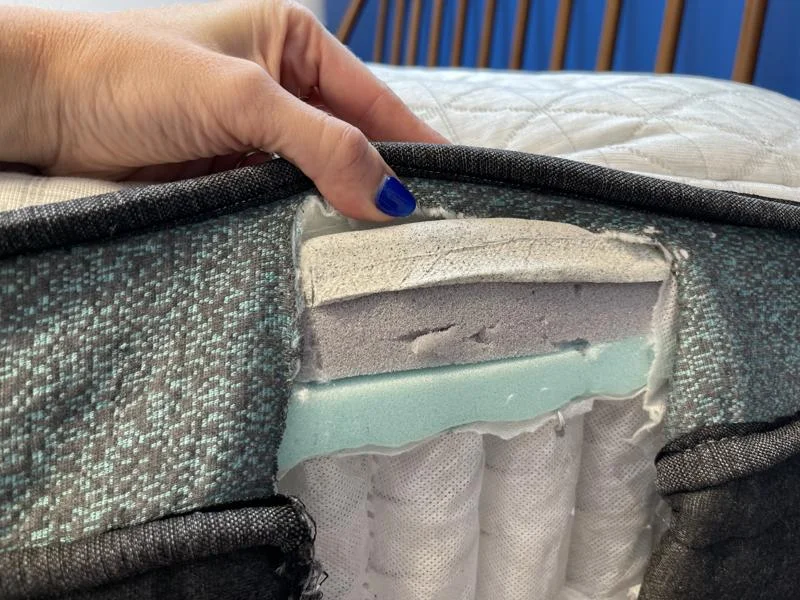
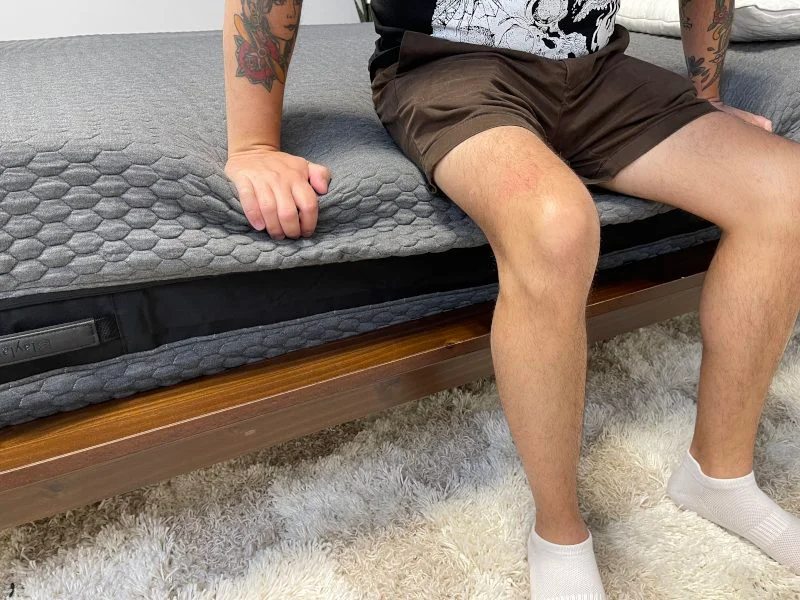
We also take a look at the bed’s edge support. Edge support can be a marker for durability since the perimeter of the bed is the most precarious; if the edges of the mattress hold up when bearing weight, we expect this to extend to the rest of the mattress, so it should hold its shape with repeated use.
To assess a bed’s edge support, we start by sitting and lying down on the very edge of the mattress, judging how secure we feel. We also repeat this test with weight plates to mimic sleepers of different sizes. The result, a final edge support score out of 5, can be viewed as a preview of how (un)likely your mattress is to sag.
But not everyone gets this up close and personal with the mattress before they can buy it. If you want to judge a bed’s durability, first go look for long-term reviews both on and off the brand’s site. If you can’t find any, take a look at any offered warranty. The warranty not only backs up your purchase if you encounter any defects, but it can act as a preview of how long a manufacturer expects a mattress to last.
Most beds last around 10 years before they start to deteriorate. This is why you’ll see many brands offer a 10-year warranty, which we’d call pretty standard. But some are more generous, offering 15–year, 25-year, or even lifetime warranties.
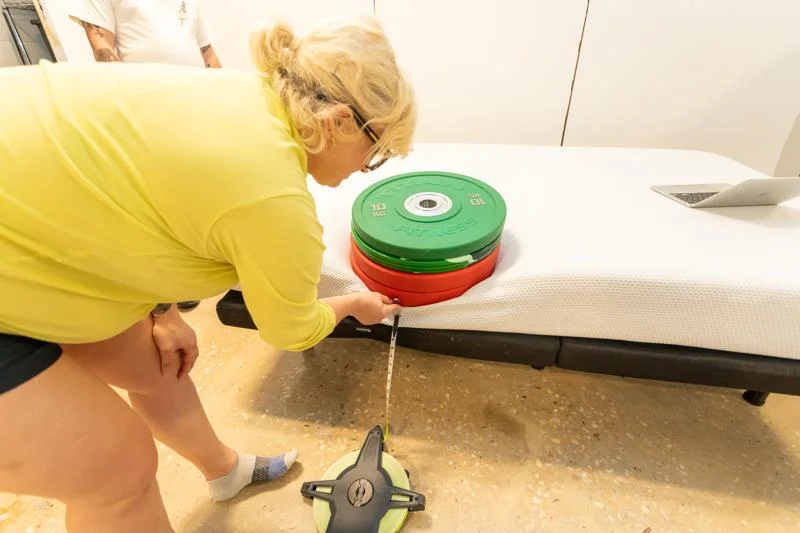
Value
Their reduced size often means RV mattresses cost less, but don’t mistake a cheap bed for a good deal. We want you to get the best bang for your buck, regardless of how much you spend. That’s why we factor in a bed’s overall quality, performance, and customer service when talking about the value of a mattress. This means everything from how durable the mattress feels to the length of its sleep trial or warranty. Some mattresses are indeed great budget options that give you a lot for what you pay, but there are some other beds that are a bit more expensive but are more than worth the extra couple of bucks.
When deciding the right price point for you, consider how often you will be sleeping on the mattress. If you use your RV frequently and are sleeping on it after long days of driving, camping, or outdoor activities, then a more supportive, thicker, and comfortable mattress that costs a bit more may be important for you. If you plan to use this mattress for a long time or consistently, then a more durable construction that costs more may also be a good idea.
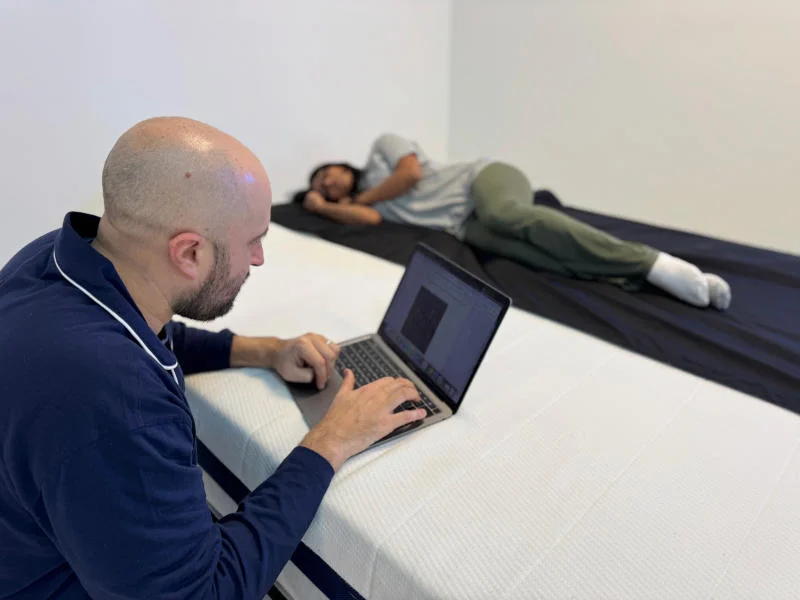
Value can be hard to glean from reviews alone, so I always suggest taking full advantage of any sleep trials offered by the brand. These are periods in which you can try before you commit to buying, lasting anywhere from several months to an entire year. So long as you initiate a return within the trial period, you can usually receive a full refund. It’s a great fall-back position to find out if a mattress is worth its weight in gold.
What to Consider in an RV Mattress
If you’re still struggling to pull the trigger on a new camper mattress, you may not have an idea of what you want or like. To help narrow the field, I’ll go over what certain sleepers should look for in a mattress and what we recommend for them.
Type of Mattress
There are four main mattress types out there: foam, innerspring, hybrid, and latex. Most RV beds are going to be memory foam mattresses. Followed by that, you’re more likely to see beds with coils. Latex beds, while great for the eco-conscious shopper, aren’t always a popular choice because of their high price and niche feel — so I’ll focus on the first three bed types for the purposes of RV life.
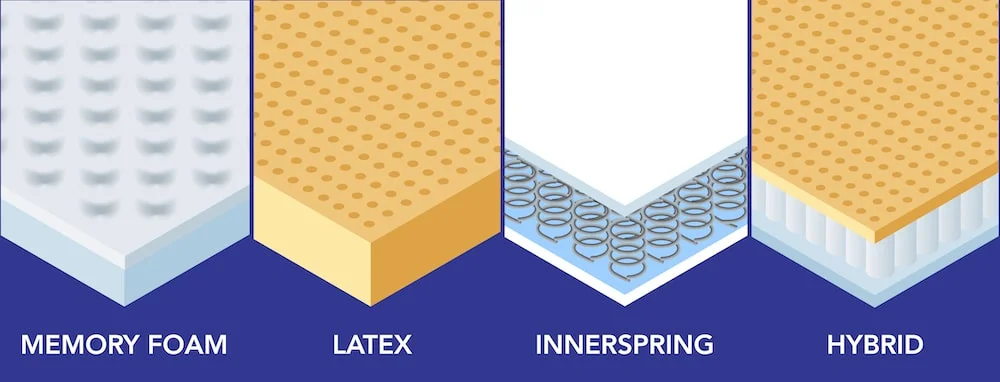
All-foam mattresses are made up of multiple foam layers. This can be memory foam or other synthetic foams. While their feel can differ, most RV foam mattresses are going to be thinner, firmer, and therefore more supportive. The dense nature of foam can make it a great motion absorber, which means fewer disturbances from rowdy partners. However, it can also trap heat. This is why many RV mattresses use gel memory foam, to combat high temperatures and a lack of air conditioning.
Innerspring and hybrid mattresses both contain coils, though their constructions differ. Innerspring beds are more traditional, with an interconnected coil layer comprising the bulk of their makeup. This leads to a bouncy, supportive feel, but not much in the way of cushioning and pressure relief. The springs also allow for more airflow through the mattress, which can help with cooling.
Hybrid mattresses have a coil layer, but also comfort layers on top. The result is a balance of softness and support that can accommodate a variety of sleeper types. While hybrid mattresses may be the most comfortable option for some, they do take up quite a lot of space in a mattress, leading to a taller profile. This might not work for all RV setups.
Sleeping Position and Body Weight
“The ideal firmness for your needs will change depending on your sleeping position and body type,” says Dr. Dasgupta. While we often recommend a medium-firm mattress for a versatile, mid-range feel, this could end up being too soft or too firm for certain sleeper types.
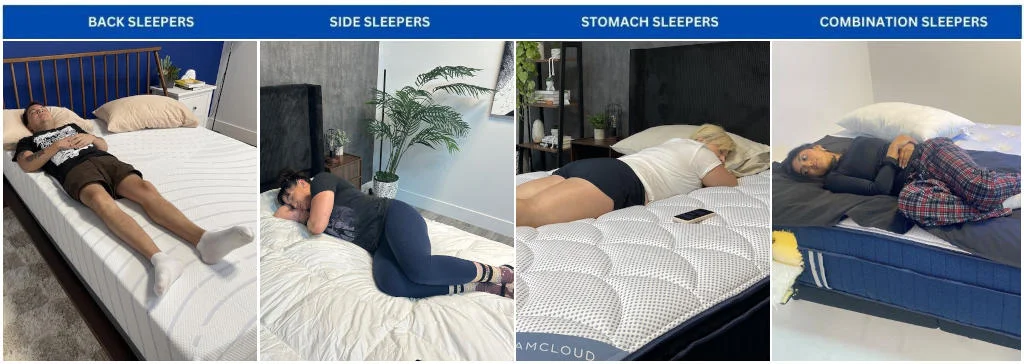
Back sleepers tend to fare well on medium or medium-firm mattresses because of their balanced feel. Side sleepers, however, need a mattress with plenty of pressure relief to contour to the hips and shoulders. For some, this might mean opting for a softer mattress. On the other hand, stomach sleepers need a bed that keeps them lifted, particularly around the hips. They might prefer something firmer.
The same goes for your body type. Folks with smaller frames may have trouble sinking into a mattress, which can lead to them feeling firmer than expected and causing undue stress on pressure points. But a sleeper who’s over 230 pounds may sink too far into a mattress and end up “bottoming out” on the support layers. “Lightweight sleepers may benefit from a mattress that’s softer for better sinkage, while heavyweight sleepers could need something firmer for better support,” Dr. Dasgupta explains.
Mattress Height
RV mattresses are generally thinner than traditional mattresses, typically ranging from four to eight inches in thickness. While this can make the mattress feel less plush than a standard mattress, many RV mattresses incorporate foam materials or other comfort layers that help provide cushioning and support. Some luxury RV mattresses (like the Brooklyn Bedding Aurora Luxe) have a more traditional mattress feel, but they’ll likely be thicker, posing a problem for limited overhead space. It all depends on what you can fit and what you can afford.
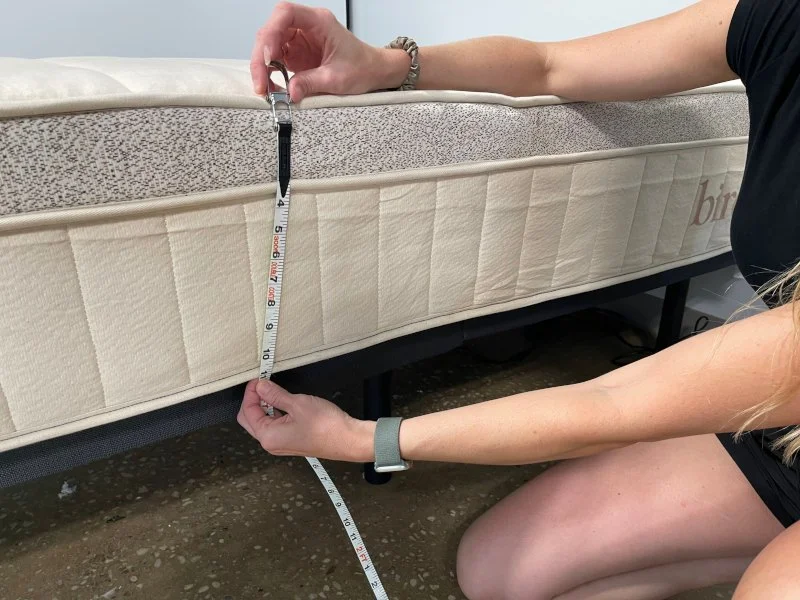
A mattress topper (ranging from one to three inches thick) can be a great option to enhance comfort on an existing mattress if you find it’s too thin. Choose a topper made from cushy, pressure-relieving materials like memory foam to make your mattress softer. If you’re looking to revitalize a saggy bed, opt for something firmer and more supportive.
Mattress Size
RV mattresses are typically smaller than standard mattresses to fit into more compact sleeping spaces. These mattresses may be described as “short,” meaning they have a standard width but are slightly shorter in length—typically around five inches shorter than a regular mattress. If you’re a taller person or need more room to stretch out, you may want to look for RV mattresses specifically designed with extra length for added comfort.
Here are some common RV mattress sizes and who they work best for:
- Short queen – A great option for couples in RVs, the RV short queen offers the same width as a regular queen-size bed but is slightly shorter, making it ideal for average-height sleepers in compact spaces.
- RV queen – This is the standard RV mattress for couples. These have the same dimensions as your typical queen mattress but may be thinner to accommodate a lower ceiling. It’s a popular choice for most RVs with enough space to fit a traditional bed.
- Short king – Like the short queen, this mattress is the same width as your traditional king-size mattress but shorter.
- RV King – Designed for larger RVs like motorhomes and campers, an RV king is often used by couples who want a spacious sleeping area but need a shorter length to fit the available space.
- RV bunk – RV bunks are ideal for space-saving bunk beds in family RVs. The dimension of this size varies, but they are commonly used in areas where multiple small sleepers need to be accommodated.
Always measure the dimensions of your space before you purchase a mattress to determine which size is best. It’s best to know beforehand so you can be prepared in the off-chance that you have to order a custom mattress to suit your space and needs.
Temperature Regulation
When sleeping in an RV, a priority of yours may be staying cool. Because RVs do not have the same cooling capacity as a home or apartment with an AC unit, a mattress that can stay cool may be especially important.
A lot of people also use their RVs more in the summer, when the temperature outside is warmer, so a cooling mattress may be even more important. We recommend looking for materials like cooling gel-infused foams or cooling covers to keep temperatures low. If you’re leaning toward an all-foam mattress, be sure the foam layers inside are breathable (perhaps described as “open-celled” or with larger pores), as this will allow for more airflow throughout the whole mattress.
To test cooling, we use a thermal gun to measure the increase in surface temperature. We measure the temperature in two instances: first, before anyone has gotten on the bed, and then again after our tester has been lying on it for five minutes. This increase shows how much heat the bed holds onto when you’re lying in it, an important metric for hot sleepers. On average, we see an increase of about 5.6 degrees. We’d consider this to be fairly good cooling, and the mattress likely remains temperature-neutral as you lie on it.

Of course, we also temper these results with insights from our testers themselves. They note how they felt lying on the mattress, whether the mattress was cool to the touch or led them to overheat. Some may disagree with the temperature test’s readings, which we also note. Both these objective and subjective findings contribute to our final cooling score, which is out of 5. Mattresses that earn 4 out of 5 and above are good picks for hot sleepers.
FAQs
What is the most comfortable mattress for an RV?
We chose the Brooklyn Bedding Signature Hybrid as our top pick for the best RV mattress, but what’s most comfortable will depend on your unique needs. Consider your body type, sleeping position, and your personal preferences before choosing a mattress. Some folks like firmer beds that ball on a budget like the Dreamfoam Essential, while others might want something softer for more pressure relief, like the Helix Midnight.
How thick should an RV mattress be?
RV mattresses typically range from 4 to 8 inches thick, with 5 to 6 inches being the most common. This thickness is practical for RVs, as these mattresses need to be lightweight, flexible, and fit well in confined spaces. If you need to thicker for comfort’s sake, always be sure to measure the overhead space before purchasing a mattress.
Do RVs need special mattresses?
Many RVs require special mattresses to fit in the allotted bunks or spaces built into the vehicle itself. Some RVs can fit traditional mattresses, but it’s always best practice to take the dimensions of your space before purchasing a new mattress. Also be sure to consider the depth of your mattress, as a taller bed can mean less overhead space.
How much should I spend on an RV mattress?
This depends entirely on what you want out of your RV mattress. We recommend setting a budget before you start shopping. This can help you ensure that you are looking within your price range. However, standard mattresses generally cost between $800 and $1,200, so this is a good price range to consider when starting your mattress hunt.
How do I care for an RV mattress?
For RV mattresses, it’s important to keep the material in good condition even if it isn’t camping season. One of the most common issues campers run into is the trapping of moisture in the mattress.
We recommend monitoring the environment’s humidity; having the atmosphere at a low humidity can prevent mold and odor. Another way to prevent trapping moisture in the mattress is by airing out the bottom. This can be done by rotating the mattress from head to foot (only if advised by the manufacturer), or it can be done by using a mattress underlay, which should allow for sufficient airflow.
Sources
- Skarpsno, E. S., Mork, P. J., Nilsen, T. I. L., & Holtermann, A. (2017). Sleep positions and nocturnal body movements based on free-living accelerometer recordings: association with demographics, lifestyle, and insomnia symptoms. Nature and Science of Sleep, Volume 9, 267–275. https://doi.org/10.2147/nss.s145777
- Caggiari, G., Talesa, G. R., Toro, G., Jannelli, E., Monteleone, G., & Puddu, L. (2021). What type of mattress should be chosen to avoid back pain and improve sleep quality? Review of the literature. Journal of Orthopaedics and Traumatology, 22(1). https://doi.org/10.1186/s10195-021-00616-5

